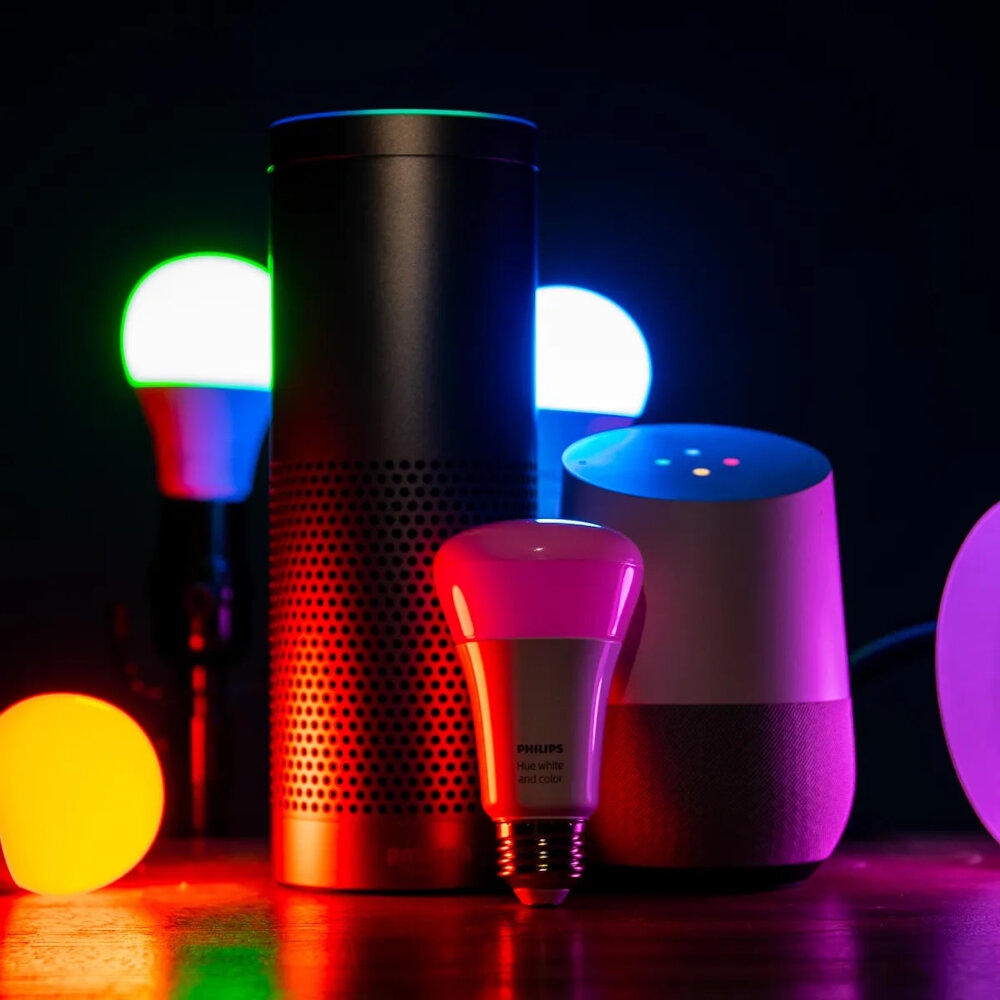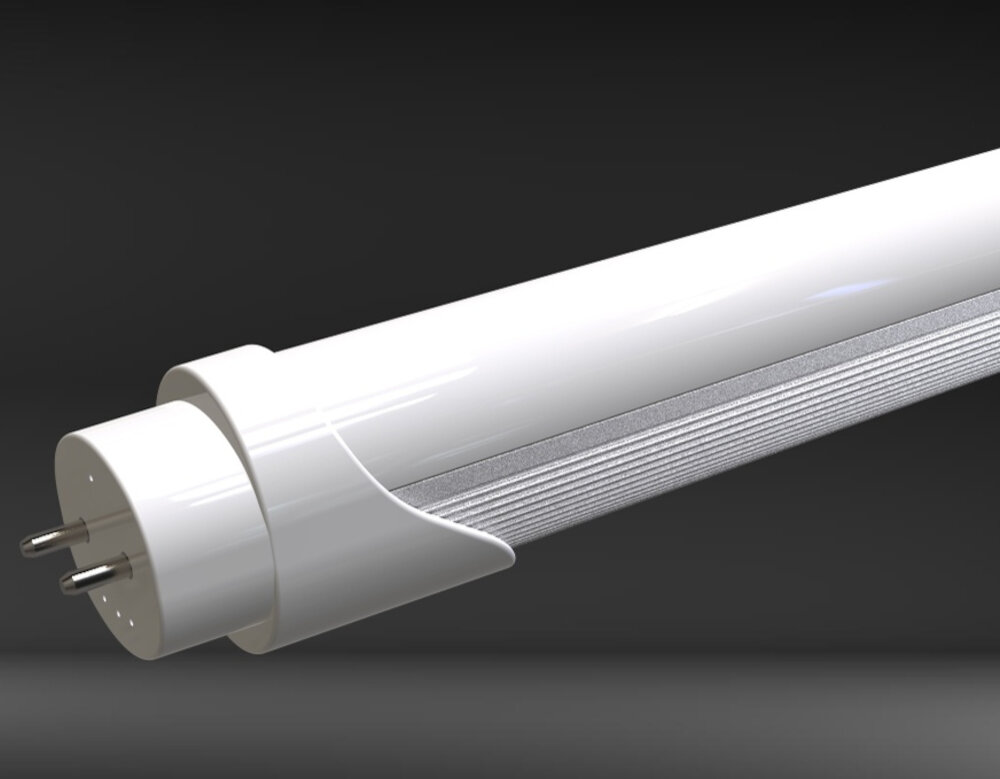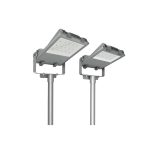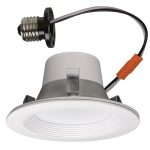Why LED Light Bulbs Flicker: Understanding the Causes and Solutions

LED light bulbs have taken the lighting industry by storm, offering a range of benefits over traditional incandescent and fluorescent bulbs. From energy efficiency to longer lifespan and improved brightness, LED bulbs have become the preferred choice for many consumers. However, one issue that LED bulbs can still experience is flickering. This can be frustrating for users, causing discomfort and even headaches. Understanding the causes and solutions of LED flickering can help users alleviate the problem and enjoy their lighting experience to the fullest. There are several reasons why LED bulbs flicker, and it’s important to identify the root cause to find an effective solution. Some of the common causes of LED flickering include voltage fluctuations, incompatible dimmer switches, poor quality bulbs, and electromagnetic interference. Identifying the cause can help users determine the best solution, whether it’s replacing the bulb, upgrading the dimmer switch, or installing a voltage stabilizer. In this article, we’ll explore the different causes of LED flickering and provide practical solutions to help users enjoy their lighting experience without any disturbance.
LED light bulbs are the newest and most innovative lighting technology, which is rapidly replacing traditional incandescent bulbs. LEDs, or Light Emitting Diodes, use less energy to produce the same amount of light as a traditional bulb, making them more energy-efficient and cost-effective. They also have a longer lifespan, lasting up to 25 times longer than incandescent bulbs, reducing the need for frequent replacements. LED bulbs are also more durable and shock-resistant, making them ideal for outdoor and industrial use. Additionally, they emit significantly less heat, making them safer to use and reducing the risk of fire hazards. Overall, LED light bulbs offer a range of advantages over traditional bulbs, making them an excellent choice for any lighting needs.
Flickering is a phenomenon that occurs when the light output of a bulb fluctuates rapidly, causing a visible change in brightness. In LED bulbs, flickering can be caused by a number of factors, including fluctuations in voltage, faulty wiring, and poor quality components. Flickering can be a major annoyance for people who are sensitive to changes in light, and it can also cause eye strain and headaches. Fortunately, there are a number of solutions available to address flickering in LED bulbs, including using high-quality components, ensuring proper wiring and grounding, and using specialized dimmer switches that are designed to work with LED bulbs. By understanding the causes of flickering and taking steps to address them, it is possible to create a comfortable and reliable lighting environment that enhances productivity and promotes well-being.
Causes of LED Light Bulb Flickering

LED light bulbs have become increasingly popular due to their energy efficiency and long lifespan. However, one of the most common issues that people experience with LED bulbs is flickering. LED light bulb flickering can be annoying and sometimes even cause headaches, but it is usually a symptom of an underlying issue. There are several causes of LED light bulb flickering, but the most common include voltage fluctuations, incompatible dimmer switches, and poor quality bulbs. Voltage fluctuations can cause LED bulbs to flicker because LEDs require a constant voltage to function properly. If the voltage is not stable, the bulb may flicker or even turn off. This can be caused by a variety of factors, such as electrical storms, power outages, or even nearby construction. In addition, if the wiring in a home is old or outdated, it may not be able to handle the voltage requirements of modern LED bulbs, which can also cause flickering. Upgrading the wiring or using a voltage stabilizer can help to solve this issue. Another common cause of LED light bulb flickering is incompatible dimmer switches. LED bulbs require specialized dimmer switches that are designed to work with their unique power requirements. If the dimmer switch is not compatible, the bulb may flicker or even buzz. This can be solved by using a dimmer switch that is specifically designed for LED bulbs. Finally, poor quality LED bulbs can also cause flickering. Cheap, low-quality bulbs may not be able to handle the voltage requirements of modern LED technology, which can cause them to flicker or even fail prematurely. Investing in high-quality bulbs from reputable manufacturers can help to solve this issue.
Voltage fluctuations are sudden changes in the amount of electrical energy flowing through a circuit. These fluctuations can be caused by various factors, including power outages, electrical storms, and faulty wiring. LED light bulbs are particularly sensitive to voltage fluctuations, as they require a stable and constant flow of electricity to operate efficiently. When the voltage fluctuates, the light output of the LED bulb may flicker or dim, which can be both annoying and potentially harmful. To prevent voltage fluctuations, it is important to ensure that your electrical system is properly grounded and that all wiring is up to code. Additionally, surge protectors and voltage regulators can help to stabilize the voltage and protect your LED bulbs from damage.
Inadequate wiring or installation can be a significant cause of LED light bulb flickering. When wiring is not correctly installed, it can cause voltage fluctuations that can cause the light bulb to flicker. Additionally, if the wiring is not sufficient for the LED bulb’s power requirements, it can cause the bulb to flicker or fail altogether. It’s crucial to have a professional electrician install your LED bulbs and ensure that the wiring is up to code and adequate for the bulbs’ power needs. Faulty wiring can also be dangerous and pose a fire hazard, so it’s essential to address any wiring issues as soon as possible.
Incompatible dimming switches are another common culprit when it comes to LED light bulb flickering. These switches are designed to work specifically with incandescent bulbs, which draw more power and have a different type of filament than LED bulbs. When an LED bulb is connected to an incompatible dimmer switch, it can cause the bulb to flicker, buzz, or even not turn on at all. This is because the switch is not able to regulate the lower amount of power that LED bulbs require, causing the bulb to fluctuate between on and off. To avoid this issue, it is important to use a dimmer switch that is specifically designed for LED bulbs.
Manufacturing defects are one of the primary reasons why LED light bulbs flicker. These defects can occur during the production process, leading to inconsistencies in the bulb’s components. For example, the LED chips may not be aligned correctly, or the driver circuit may be improperly soldered. These errors can result in voltage fluctuations, which cause the bulb to flicker. To prevent manufacturing defects, manufacturers must implement strict quality control measures and perform thorough testing on each bulb before it leaves the factory. It’s essential to identify and address any defects early on to ensure that consumers receive high-quality, reliable LED light bulbs.
Environmental factors can play a huge role in the flickering of LED light bulbs. Temperature changes, humidity, and even voltage fluctuations can all contribute to this frustrating problem. In cold temperatures, LED bulbs may take longer to warm up and reach full brightness, causing them to flicker or flash. High humidity levels can also cause flickering as moisture can build up in the bulb and affect the electrical connections. Additionally, voltage fluctuations from power outages or fluctuations in the electrical grid can cause flickering or dimming of LED bulbs. Understanding these environmental factors and taking steps to address them can help reduce or eliminate the flickering of LED light bulbs.
Solutions for LED Light Bulb Flickering

LED light bulbs have become increasingly popular due to their energy efficiency and longevity. However, one of the common issues that people face with LED light bulbs is flickering. There are several reasons why LED light bulbs flicker, including voltage fluctuations, incompatible dimmer switches, and outdated wiring. Fortunately, there are several solutions to these problems that can help eliminate the flickering and ensure that your LED bulbs are working properly. One solution is to replace the dimmer switch with one that is compatible with LED bulbs. Many older dimmer switches were designed for incandescent bulbs and may not be suitable for LED bulbs. Upgrading to an LED-compatible dimmer switch can help ensure that the bulbs work properly and eliminate any flickering. Another solution is to use a voltage stabilizer or surge protector to regulate the voltage to the bulbs. This can help prevent voltage fluctuations that can cause flickering and ensure that the bulbs are receiving a consistent, steady supply of power. By addressing the underlying causes of LED bulb flickering, you can ensure that your lights are working properly and efficiently.
Voltage stabilizers or regulators are electronic devices that maintain a constant voltage level of an electrical circuit. They are used to protect sensitive electronic devices from the fluctuations in the input voltage, which can cause damage or malfunctioning. In the context of LED light bulbs, voltage stabilizers or regulators can play a crucial role in ensuring a stable and consistent power supply to the bulb. They can help to reduce the flickering of LED light bulbs caused by voltage fluctuations in the electrical circuit. By regulating the voltage, voltage stabilizers or regulators can also extend the lifespan of LED light bulbs and improve their performance. Overall, the use of voltage stabilizers or regulators can provide a reliable and cost-effective solution to the common problem of flickering LED light bulbs.
Proper wiring and installation are essential factors in ensuring that LED light bulbs function correctly and without flickering issues. When wiring LED lighting, it is crucial to follow the manufacturer’s instructions and use the correct cables and connectors. Additionally, it is essential to ensure that the wiring is grounded correctly and that the voltage is consistent with the bulb’s requirements. Proper installation is also critical, as LED bulbs generate heat, and improper installation can lead to overheating and flickering. It is essential to ensure that the bulb is adequately secured and that the fixture provides adequate ventilation to prevent overheating. By following these guidelines, you can enjoy the benefits of LED lighting without experiencing any flickering issues.
Installation of compatible dimmer switches is a crucial step towards preventing LED light bulbs from flickering. The use of outdated or incompatible dimmer switches can lead to the bulbs flickering or even failing to work altogether. Therefore, it is essential to ensure that the dimmer switch used is specifically designed for LED bulbs. This will not only prevent flickering but also extend the lifespan of the bulbs. Additionally, it is important to note that the installation process of dimmer switches varies depending on the type of switch and the wiring in the home. Therefore, it is recommended to seek the services of a professional electrician to ensure proper installation and prevent any electrical hazards.
If you have purchased LED light bulbs and are experiencing flickering, it could be a sign of a defective product. In such a case, it is important to contact the manufacturer and inform them of the issue. You can either call their customer service hotline or send them an email detailing the problem. Make sure to provide them with the product information, such as the model number and purchase date, to help them identify the issue. The manufacturer may offer a replacement or refund depending on their warranty policy. It is important to address the issue promptly as flickering lights can cause discomfort and may lead to headaches or eye strain.
Addressing environmental factors such as temperature and humidity is crucial in preventing LED light bulbs from flickering. Temperature fluctuations can cause the LED driver to overheat, causing the bulb to flicker or fail altogether. Additionally, high humidity levels can lead to condensation forming inside the bulb, which can also cause flickering. To combat these issues, it is important to ensure that the bulbs are installed in a location with stable temperatures and humidity levels. For example, avoid installing LED bulbs in areas with a lot of moisture, such as bathrooms or humid climates. By addressing these environmental factors, you can help ensure that your LED light bulbs operate smoothly and without any flickering.
Preventative Measures for LED Light Bulb Flickering

One of the most convenient and long-lasting lighting options available today is LED light bulbs. However, one common issue that many people face with them is flickering. Flickering LED light bulbs can be both annoying and harmful, especially for those who are sensitive to light or suffer from migraines. Fortunately, there are various preventative measures that you can take to avoid this problem. One of the most common causes of LED light bulb flickering is voltage fluctuations. If the voltage supplied to the bulb is not consistent, it can cause the light to flicker. To prevent this, you can install voltage stabilizers or regulators. These devices will ensure that the voltage remains steady, preventing any fluctuation that could cause the bulb to flicker. Another cause of LED light bulb flickering is a poor connection. If the bulb is not screwed in correctly, loose, or not making proper contact with the socket, it can cause flickering. To prevent this, make sure that the bulb is screwed in tightly and that the socket is clean and free of debris. Additionally, if the bulb is not compatible with the dimmer switch, it can cause flickering. In this case, you will need to replace the dimmer switch with one that is compatible with LED bulbs. By taking these preventative measures, you can enjoy the many benefits of LED lighting without the annoyance of flickering bulbs.
Choosing high-quality bulbs is essential to avoid flickering issues. It’s important to check the product label and select bulbs from reputable manufacturers. LED bulbs with flicker-free technology are ideal as they provide consistent lighting without any oscillation. The quality of the bulb also depends on its color rendering index (CRI), which measures its ability to reproduce colors accurately. A high CRI bulb will make colors appear more vibrant and natural. Additionally, the wattage of the bulb should be suitable for the fixture to avoid overheating and flickering. By selecting high-quality bulbs, you can enjoy a comfortable and stable lighting environment while reducing energy consumption and costs.
Ensuring proper installation and wiring of LED light bulbs is essential to prevent flickering. The flicker can occur when there is an issue with the electrical system in the house or if the LED bulb is not compatible with the dimmer switch. It is important to check the compatibility of the LED bulb with the dimmer switch before installation. Additionally, it is essential to ensure that the wiring is done correctly, and the connections are tight. Loose connections can cause flickering, and in some cases, it can even be a safety hazard. Therefore, it is recommended to seek the help of a professional electrician for proper installation and wiring to avoid flickering and other electrical issues.
Using compatible dimmer switches is a crucial step to prevent LED light bulbs from flickering. Dimmer switches regulate the amount of voltage flowing to the bulb, which can affect its performance. LED bulbs require a specific type of dimmer switch that is designed to work with their low wattage and energy-efficient technology. Using an incompatible dimmer switch can cause the LED bulb to flicker, produce a buzzing sound, or even fail to work altogether. Therefore, it is essential to check the compatibility of the dimmer switch with the LED bulb before installation to ensure a smooth and uninterrupted lighting experience.
Monitoring environmental factors is an essential aspect of preventing LED light bulbs from flickering. The flickering of LED bulbs could be caused by factors such as voltage fluctuations, temperature changes, and poor wiring. Voltage fluctuations could occur due to power surges or drops, while temperature changes could be due to the installation location of the bulb. Poor wiring could also be a factor, leading to flickering when the bulb is switched on or off. To prevent these environmental factors from causing flickering in LED bulbs, it is essential to monitor and manage them effectively. This can be done by using voltage regulators, ensuring proper wiring, and installing bulbs in locations with stable temperatures.
Regular maintenance and replacements are essential to ensure that LED light bulbs work efficiently and effectively. Flickering can be a sign that the bulb is nearing the end of its lifespan, or that there is an underlying issue with the electrical circuit. It is important to check the manufacturer’s recommended lifespan for the bulb and to replace it as needed. Additionally, regular maintenance such as cleaning the bulb and ensuring that it is securely connected in its socket can prevent flickering caused by loose connections or dirt buildup. By practicing regular maintenance and replacements, you can extend the lifespan of your LED light bulbs and avoid the annoyance and potential safety hazards of flickering lights.
LED light bulbs are becoming a popular choice for homeowners due to their energy efficiency and longevity. However, they are prone to flickering, which can be caused by a variety of factors. One common cause is voltage fluctuations in the electrical system, which can be solved by installing voltage stabilizers or regulators. Another cause is compatibility issues between the LED bulb and dimmer switches, which can be resolved by using dimmer switches specifically designed for LED bulbs. Loose connections, outdated wiring, and overheating can also result in flickering, requiring inspection and maintenance by a qualified electrician. By identifying and addressing the underlying causes of flickering, homeowners can enjoy the benefits of LED lighting without the annoyance of flickering bulbs.
It is vital to address the issue of LED light bulbs flickering because it not only affects the aesthetics of the lighting but also can be a safety hazard. Flickering lights can cause eye strain, headaches, and even seizures in individuals with epilepsy. Additionally, flickering lights can be a sign of an electrical issue, which can lead to fires or other hazards. Furthermore, flickering lights can affect the functionality of the lighting, especially in areas where consistent and reliable lighting is necessary, such as hospitals and industrial facilities. Therefore, understanding the causes and solutions to LED light bulb flickering is crucial for maintaining safe and functional lighting.
Taking preventative measures is crucial for long-term success, especially when it comes to our health and safety. The same can be said for the functionality of our home appliances, such as LED light bulbs. It is important to understand the causes and solutions of flickering LED light bulbs in order to prevent future issues and ensure their longevity. By taking the time to research and invest in high-quality LED bulbs, as well as properly installing and maintaining them, homeowners can avoid the inconvenience and expense of frequently replacing malfunctioning bulbs. By encouraging preventative measures, we can save time, money, and energy in the long run.
Conclusion

In conclusion, understanding the causes and solutions of LED light bulb flickering is crucial for a comfortable and safe lighting experience. Though flickering may seem like a minor inconvenience, it can lead to headaches and eye strain, and can even be a warning of more serious electrical problems. By identifying the underlying causes of flickering, such as voltage fluctuations or incompatible dimmer switches, and implementing effective solutions, such as installing voltage regulators or upgrading to compatible dimmer switches, individuals can ensure a steady and reliable lighting source. Ultimately, taking the time to address LED light bulb flickering can lead to improved comfort, safety, and overall quality of life.




